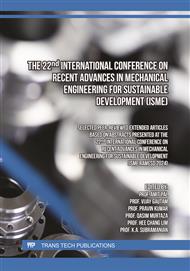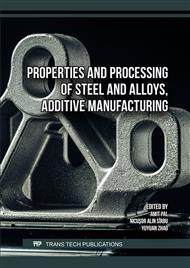p.53
p.61
p.67
p.77
p.87
p.97
p.105
p.117
p.133
Experimentation Evaluation of Dynamics of Steel Wire Rope
Abstract:
Wire ropes represent a distinct category of ropes synthesized through the intertwining or braiding of individual steel wires. This unique construction confers notable attributes such as strength, flexibility, and durability to the resultant rope. The pervasive wire ropes across diverse industries underscores their capacity to adeptly manage substantial loads and endure adverse environmental conditions finding its application in mechanical, civil, mining, and marine engineering. This paper presents usage of image processing method to detect the deflection of a steel wire rope. The system comprises of dividing the wire rope into different sections, spatial referencing, frame separation, color-based detection, morphological operations, data collection and visualization. The steel wire rope deflection program will allow designers to conveniently process the transverse deflection trajectories of a steel wire rope in real time. One may further introduce any control actions when the deflection distance reaches a threshold value. The image-based algorithm enabled a robust detection of the deformed shape as a function of time, thus obtaining its dynamic trajectories. The deflection shapes and trajectories are compared with numerical predictions made using Cosserat Rod theory, which considers the geometric nonlinearities introduced due to large deflection. The numerical solution gave a rough estimate of the static deformation state of the wire, which agrees with the experimental results. This study will be useful for Structural Health Monitoring, Safety Assurance, Fatigue Analysis and Performance optimization. Moreover, the Continuum Mechanics employs Cosserat rod theory to model continuum robots which will provide enhanced computational efficiency and better dynamic simulation capabilities[18]. The deflection shapes and trajectories are compared with analytical predictions made using Cosserat Rod theory, which considers the geometric nonlinearities introduced due to large deflection.
Info:
Periodical:
Pages:
133-142
Citation:
Online since:
December 2024
Authors:
Keywords:
Price:
Сopyright:
© 2024 Trans Tech Publications Ltd. All Rights Reserved
Share:
Citation:



